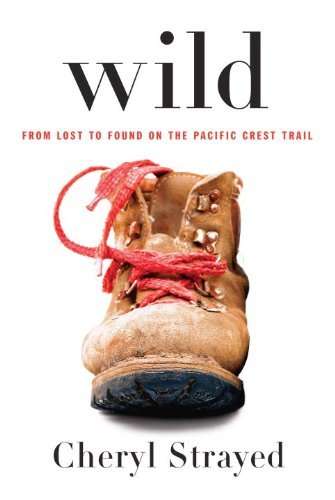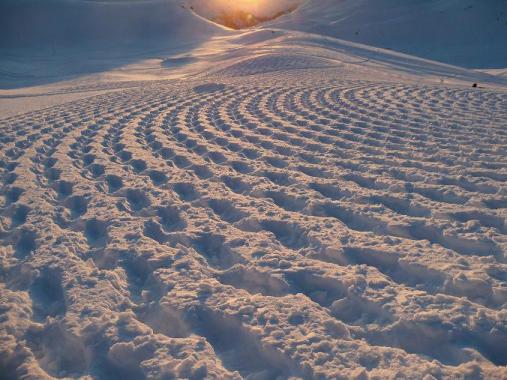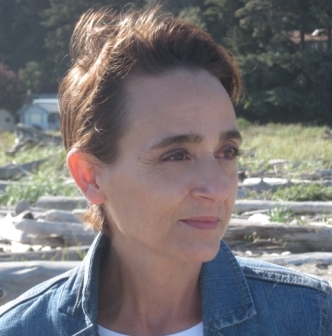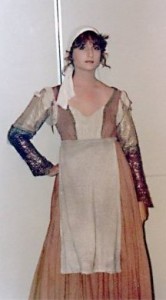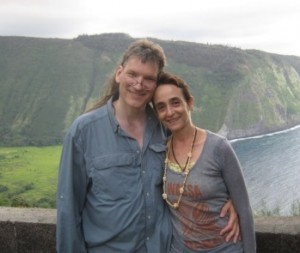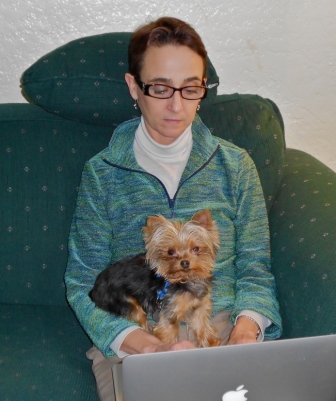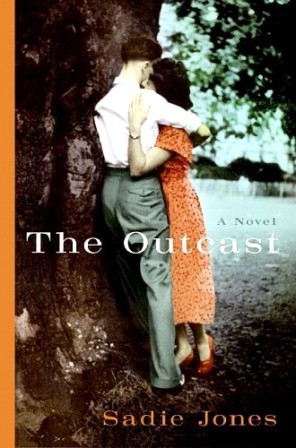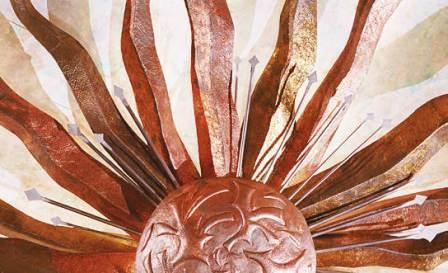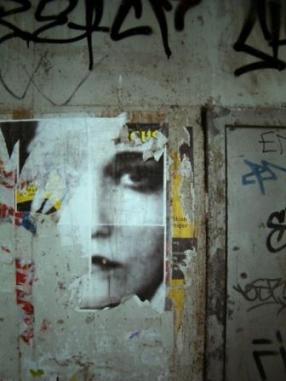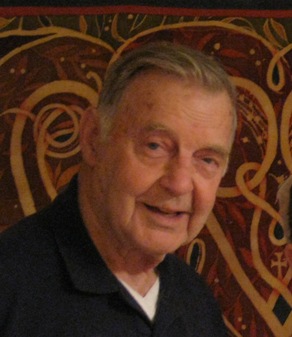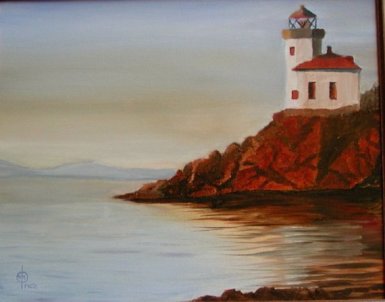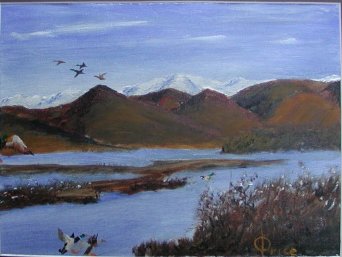Wild
Cheryl Strayed
From Lost to Found on the Pacific Crest Trail
At twenty-two, Cheryl Strayed thought she had lost everything. In the wake of her mother’s death, her family scattered and her own marriage was soon destroyed. Four years later, with nothing more to lose, she made the most impulsive decision of her life: to hike the Pacific Crest Trail from the Mojave Desert through California and Oregon to Washington State—-and to do it alone. She had no experience as a long-distance hiker, and the trail was little more than “an idea, vague and outlandish and full of promise.” But it was a promise of piecing back together a life that had come undone.
-From Goodreads
-Visit Cheryl Strayed’s Website
-Book suggestion from Helen Landalf
Texture and Snow
Simon Beck
Many hours of walking in snowshoes created this textured pattern at the Arc 2000 Ski Resort in the French Alps. For more snow art go to Simon Beck’s Snow Art Facebook Page.
It Couldn’t Be Done
 Photograph by Anthony Reily
Photograph by Anthony Reily
Somebody said that it couldn’t be done
But he with a chuckle replied
That “maybe it couldn’t,” but he would be one
Who wouldn’t say so till he’d tried.
So he buckled right in with the trace of a grin
On his face. If he worried he hid it.
He started to sing as he tackled the thing
That couldn’t be done, and he did it!
Somebody scoffed: “Oh, you’ll never do that;
At least no one ever has done it;”
But he took off his coat and he took off his hat
And the first thing we knew he’d begun it.
With a lift of his chin and a bit of a grin,
Without any doubting or quiddit,
He started to sing as he tackled the thing
That couldn’t be done, and he did it.
There are thousands to tell you it cannot be done,
There are thousands to prophesy failure,
There are thousands to point out to you one by one,
The dangers that wait to assail you.
But just buckle in with a bit of a grin,
Just take off your coat and go to it;
Just start in to sing as you tackle the thing
That “cannot be done,” and you’ll do it.
-Written by Edgar Albert Guest
-Submitted by Aidan Price
Author Helen Landalf
I think having to face my mortality at an early age has made me appreciate my life more. When you’re young, you tend to think that you have all the time in the world, but I learned early that you don’t. When I have a dream, I go for it instead of postponing it until sometime in the future.
Born in San Diego,California, Helen Landalf discovered her creative gifts early as the designated story teller and theater director of her neighborhood playmates. After high school, she earned a scholarship to study Drama at San Diego State University and later attended the Professional Actor’s Training Program at the State University of New York at Purchase. She completed her B.A. in Theater Arts at the University of Washington where she also received a K-8 Teaching Certification.
Following graduation, Helen performed in several community theater productions, but discovered another passion in Creative Movement. She has taught Creative Dance to preschoolers and is a certified Pilates instructor. Her first writing venture was in producing instructional books about Creative Movement. Since then, Helen has written picture books for children and her first Young Adult novel, Flyaway, was published in 2011.
Helen lives with her husband, Steven, in Seattle with a butterscotch tabby named Sunny, and miniature Yorkie called Toto. She has a stepson in college and another serving in the Air Force.
Helen, thank you for meeting with Healing Hamlet. Throughout your life, you have always been drawn to the arts: first theater, then dance and now writing. Can you tell us how you transitioned into each of these creative outlets and where they interconnect for you?
Actually, my first experience with the arts was as a pianist. I took lessons from the time I was seven through college and even had some piano students. I loved playing songs from musicals and would often sing as I played. In both high school and college, I took voice lessons. I also enjoyed dancing and took ballet lessons. As I mentioned before, I had an early interest in theater, and my training in voice and dance made musical theatre a perfect fit for me.
Although I always enjoyed writing, it became a serious part of the mix much later in my life. Once I started teaching Creative Movement to preschool children, I co-authored (with Pamela Gerke) a book called Movement Stories for Young Children in which I share the stories I use to inspire kids to dance. This led to several more instructional books for teachers, which led to two picture books and then to my YA novel, Flyaway.
It may sound as if I jumped from one art form to the next, but I feel that every art form I have pursued has fed into the next. Music, dance, theatre, and writing are all an integral part of who I am.
In your blog, you describe your childhood household as “busy and challenging”. How did these years affect who you are today? Was reading, writing or theater an outlet for you during this time?
I was the middle child and the only girl in the family. My older brother, Mark, was born with autism, so I became the groundbreaker, reaching all the developmental milestones ahead of him and my younger brother, Paul. My dad, who is no longer living, became known as the Grandfather of Modern Autism Research for his work on behalf of people with autism. My mom had her hands full looking after all of us.
In many ways, our household revolved around my autistic brother. He was born at a time when little was known about autism and how to treat it, so my parents became pioneers in that regard. As a result, even though they cared deeply for all three of us kids, he demanded the lion’s share of their attention. I had to find ways to entertain myself and not get in the way.Reading provided a way for me to escape, and music, dance, theater, and writing gave me an avenue for expressing my feelings. The performing arts also let me have my own opportunities to be in the spotlight.
As a teenager, you were diagnosed and successfully treated for cancer. If you had not gone through that experience, how would you be different today? How might your life be different now?
I think having to face my mortality at an early age has made me appreciate my life more. When you’re young, you tend to think that you have all the time in the world, but I learned early that you don’t. When I have a dream, I go for it instead of postponing it until sometime in the future.
It’s hard to say whether my life would be different if I hadn’t had Hodgkin’s Lymphoma, but my guess is that I might have been more practical and gone after things like a predictable income and a secure retirement instead of taking the risk to pursue my artistic dreams. And I probably would never have met my husband, Steven (a 17-year brain cancer survivor), who has brought so much joy to my life.
Your first Young Adult novel, Flyaway, was released at the end of 2011. You have called writing for teens “your true passion”. What draws you to write for this age group?
My own teen years were very challenging and emotionally charged because of the cancer, so I think I go back to that age a lot in my thoughts and memories. Also, I missed out on some of the fun of being a teenager because I had to spend so much time in the hospital, so writing about teens gives me a chance to vicariously experience that. My younger stepson is still a teen, and I enjoy interacting with him and his friends. Teenagers are fascinating people!
The book Flyaway examines drug addiction and the failings of parents. When did the main character of Stevie first introduce herself to you? Why did you feel it was important to tell her story?
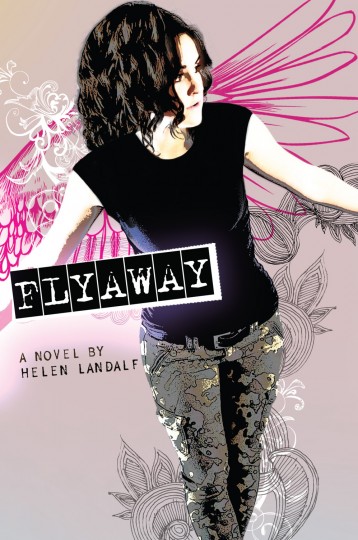 Stevie first started speaking to me after a conversation I had with a teen and family therapist. He commented on how often he’d seen kids who would remain fiercely loyal to parents who neglected, abused, or abandoned them. I was fascinated by the idea of that kind of unconditional loyalty and wondered if there would ever be a breaking point, a point at which a child would have to admit the truth about their mom and/or dad. I set out to explore that question, and Flyaway was the result.
Stevie first started speaking to me after a conversation I had with a teen and family therapist. He commented on how often he’d seen kids who would remain fiercely loyal to parents who neglected, abused, or abandoned them. I was fascinated by the idea of that kind of unconditional loyalty and wondered if there would ever be a breaking point, a point at which a child would have to admit the truth about their mom and/or dad. I set out to explore that question, and Flyaway was the result.
I think Stevie’s story is important because of how common it is for a child or teen to live with that level of denial. I’ve been gratified to hear from readers, young and old, that the story resonated with them.
What are your favorite writers and books?
Probably my favorite writer for young adults is Laurie Halse Anderson. I consider her novel Speak a masterpiece in that genre, and I also love her book Wintergirls, which deals with the subject of anorexia. Another favorite is Chris Crutcher. I especially love his novel Deadline, about a boy who has less than a year to live. On the adult side, I just finished reading Wild by Cheryl Strayed, which I absolutely adored.
What is your next project?
I’m currently working on a Young Adult novel about a girl who is involved with theater and falls in love with her gay best friend.
Helen, thank you so much for sharing the events that shaped who you are today. We look forward to seeing your next book!
Visit Helen Landalf on her website.
The Outcast
Sadie Jones
Jones’s compelling debut explores childhood damage and the fragile possibility of survival against a background of buttoned-up late-1940s and ’50s middle-class life. The heartbreaking story concerns ten-year-old Lewis Aldridge, whose mother drowns while the two are having a picnic. Gilbert, Lewis’s father, has no vocabulary with which to discuss feelings, and he denies Lewis an outlet for his pain and guilt. The boy becomes numb, withdrawn from his friends, “closed and not really there.” But there’s also a well of rage within him which expresses itself when Gilbert announces a swift remarriage, and again when another boy (correctly) describes Lewis’s dead mother as “drunken.” … The only person who understands him is Kit Carmichael, daughter of bullying, abusive Dicky Carmichael, Gilbert’s boss. A confident, suspenseful and affecting first novel, delivered in cool, precise, distinctive prose.
-From Kirkus Reviews
Starburst
Artist Napoleon Abueva
Napoleon Abueva is an artist and sculptor who has been named a National Artist of the Philippines. When Napoleon was only 14, he was captured and tortured by the invading Japanese and his parents were killed. Today he is known as the Father of Modern Philippine Sculpture.
Learn more about Napoleon Abueva and view his works here.
To the Girl
To the girl who was raped: You are so strong. I cannot fathom the pain you must have gone through. The fact that you have the bravery to write it (even on a bathroom wall) gives me hope.
To the girl with eating disorders: I promise you, although I don’t know you, you are beautiful, you deserve your health. You deserve freedom from that hell.
To the girl with the alcoholic father: I am so sorry for the agony it must cause. Again, such courage is remarkable you must be such a strong person to see such pain.
To the girl whose father died: Missing them never goes away. The ache of their absence never goes away. But the love they had, the memories you share surely must last. I am sure, out of the bottom of my heart, the people who have left you in this world are exceptionally proud of the person you are.
Every time I see these walls, these confessions, I feel so blessed to know I have the privilege of seeing them. Your moments, these secrets, are all precious even though they are sad. To all of you (including those I did not mention, and those who have not yet written)
You are worthy,
You are strong,
You are brave,
You are loved,
Somebody cares.
-Anonymous note taped to a bathroom wall
Give it Away
Quincy Coleman
Give it away today so that I can receive tomorrow
Give it away today so that I can receive tomorrow
All the things that fill me
when I’m empty
Give it away
Have faith in change
Have faith
Give it away
-Explore more music by Quincy Coleman
Artist David M. Price, Sr
There is something special involved with creating your own interpretation of a scene, object or person. In my case, each brush stroke takes me along the road toward what I visualized before starting. Sometime I succeed in portraying that vision –often I don’t. But occasionally something turns out even better than I had visualized. Happy day when that happens! Creating and appreciating art in all its forms will enrich anyone’s life.
David M. Price was born the year the stock market crashed and raised during the Great Depression in a large farm family in southern Oregon. He earned a Business Administration degree from University of Oregon before serving 5 years as a pilot in USAF. After his service in Korea, David returned to college and received another degree in Forest Management. He worked for over two decades in forest management while raising his family in the state of Idaho. David now lives with his wife, Joan, in the beautiful San Juan Islands where he discovered his love of painting. On visits to the island, his three grandchildren enjoy the tales of their grandfather’s numerous near-death adventures: from rolling into the hot coals of an open fireplace as an infant (he has the scar on his head to prove it!), to nearly drowning in a stream as a a toddler, to falling off the roof. But like a cat, he has always landed on his feet, a little tougher than before.
David’s landscapes, featuring the beautiful views around his home, places from his past, and scenes from recent travels, have been featured in many venues in Friday Harbor,Washington. He has had shows at the local community center and the San Juan Community Theater. I asked David to talk to Healing Hamlet about life and painting.
David, thank you for sharing your stories and your paintings. Your painting career began after retirement. How long have you been painting and how did you get started? What steps did you take to move from novice painter to where you are today?
I retired from my forestry employment in 1985 and moved to San Juan Island in 1989 where we built a modest retirement home designed for two active people. By 1992 with home building completed, I needed something inspiring to do. One son and my daughter were enjoying life as full time, self employed artists. The other son could have done the same had he so chosen. Where did they get all those right brain genes? Their mother has excellent artistic sensibilities, but was it possible that a few stray art related genes might have come from me? A simple start with a few cheap watercolors and soon I was hooked. An occasional class with local artists showed that, at least I was competitive. I gave away paintings to relatives, some of whom actually asked for more. Encouraging! A friend suggested that I sign up for a longer series of classes and the instructor thought I should switch to oils (easier to cover up serious mistakes.) Oils have been my favorite medium since. Persistence! I think it is vital to “hang in there” seeking instruction and support of instructors and fellow students no matter how “awful” you may think your results have been. Staying engaged is the key to artistic progress. I am still almost perpetually enrolled in one class or another.
What advice would you give someone who has always wanted to be a painter but doesn’t know where to start?
Just START!! Find a basic course. I don’t think selection of a medium is so important at the beginning. Basic instruction will provide information that will apply to whatever one eventually chooses. However if a choice is available, I suggest a drawing class is probably the best way to start. It’s basic to anything else you might do.
Twenty years ago, would you have been surprised by your current dedication to the craft of painting?
Oh, yes. Although I enjoyed making music as a child (piano, trombone) I wasn’t interested in producing art. My efforts to portray anything on paper were feeble at best. I believe it was the fast developing artistic skill of my two older children, that produced, not only the curiosity, but the willingness to give “art” a try. And now, when I am compelled to spend time on some mundane chore rather than “splashing paint around”, I’m more inclined to “git ‘er done” so I can return to doing the fun stuff. It has long since stopped being something I do because there is nothing else to do.
About what percentage of your free time do your spend in your studio?
Well, I do still love to hunt and fish –I have an RV and I enjoy traveling around the western states. I play the piano (badly) from “Fake” books. Most of my hobbies are seasonal things, but while I am at home, I’m very often in either my studio or what I call my “gallery/frame room” where I hang some of my most recent pieces. Incidentally, I do all of my own framing. I pick up pieces of molding or weathered barn wood or driftwood anytime I think it could work as a frame. People give me “stuff”- old tubes of paint, scraps of mat board, left over lumber pieces, old canvases often in need of repair. But whatever I am doing in my studio, frame room or shop room, it takes up about one third of what might be called my “free time.” Free time? Let’s just call it “time.” It’s all free when you’re as old as I am.
As an octogenarian, the decades of a well lived life sometimes speak to you through a sore back or stiff knee. You have also dealt with the loss of two siblings over the past year. Have there been times when painting provided a haven for you?
 Yes, I must admit that I am “old.” I may be plagued with a variety of ailments, stiff joints, nervous twitches, shortness of breath, palpitations and arrhythmic heart despite my pacemaker, metal femur, artificial joints and the handfuls of pills taken on a three times daily schedule, but I have no complaints. My life has been and remains good. I accept who and where I am without question or remorse. Yes the loss of a very close brother and my only sister this year is sad, but only for a little while. They lived well and for a long time. We never know when our time will come, but we all know full well that it will come. I believe in “healing” quickly and getting on with one’s own life. I paint because I just enjoy doing it –not to shield myself away from sad things that may happen around me.
Yes, I must admit that I am “old.” I may be plagued with a variety of ailments, stiff joints, nervous twitches, shortness of breath, palpitations and arrhythmic heart despite my pacemaker, metal femur, artificial joints and the handfuls of pills taken on a three times daily schedule, but I have no complaints. My life has been and remains good. I accept who and where I am without question or remorse. Yes the loss of a very close brother and my only sister this year is sad, but only for a little while. They lived well and for a long time. We never know when our time will come, but we all know full well that it will come. I believe in “healing” quickly and getting on with one’s own life. I paint because I just enjoy doing it –not to shield myself away from sad things that may happen around me.
Where do you find your influences for your artwork?
I find inspiration in my classmates. There are all levels of skill and talent among my fellow students and artist friends. We do actually become like little “groupies”, each observing what the other is doing and the progress being made. We support each other. But so far as inspiration resulting from study of “The Masters”, I don’t often study or refer to anyone in particular. I have enjoyed reading about the early American artists known as the Hudson River Artists and have copied some of the works of Sanford Gifford of that group. So far I am satisfied with efforts to develop my own style, learning by doing rather than attempting to be someone else.
In your island home, you are surrounded by art. As well as the views of nature outside your windows, there are paintings, drawings and sculptures, created by family, friends and artists you admire. Could you imagine living without art? How does art enrich your life?
In my view there is no way one could possibly live a life devoid of art — it’s all around us all the time. You couldn’t avoid it if you wanted to. I just drove home from town, enjoying the billowing cumulus cloud formations over the distant Cascade Mountain Range. The late afternoon sun was reflecting rosy tones over the water and the trees on the horizon line on a nearby ridge stood out in stark silhouettes. Everything touched by the golden rays of the sun was warmed, contrasting with the cool, dark cast shadows beyond them. Art is not only what one can hang on the wall or that which can be molded by human hands.
As an outdoorsman, all my life I’ve enjoyed the natural beauty provided at no cost by Mother Nature. And now, in retirement, I do live in one of the most beautiful places on earth. I don’t mean to ignore the fact that I live and work with many talented artists who have come here for the same reason I selected this place. My walls and bookshelves are adorned with the art of my children and grandchildren.
There is something special involved with creating your own interpretation of a scene, object or person. In my case, each brush stroke takes me along the road toward what I visualized before starting. Sometime I succeed in portraying that vision –often I don’t. But occasionally something turns out even better than I had visualized. Happy day when that happens! Creating and appreciating art in all its forms will enrich anyone’s life.
Anything else we should know about you?
I don’t consider myself to be an artist—I’m a proud American citizen who paints; a retired forester who paints; an ex fighter pilot who paints; a faithful husband, proud father and devoted grandfather who paints a lot. Whatever I may be doing, I’m either doing it because it needs to be done or because I enjoy doing it. Painting is in the latter category and I look forward to many more years of it.
See more paintings by David M. Price, Sr on his website: GratefulGeezerArts.Etsy.com
